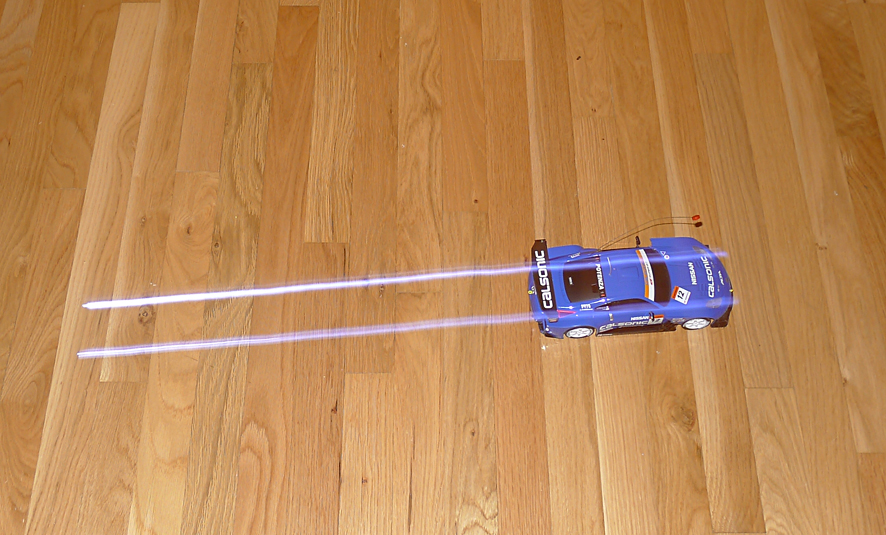I have been working on my newest book in the Photographer’s Guide series of guides to advanced compact cameras — in this case, the Nikon Coolpix P500. In working on the photographs for that book, I decided to do a couple of illustrations of what first-curtain and second-curtain flash photos actually look like. In the past, I have described the effects, but never illustrated them. In order to make these photos, I got a small R/C (radio-controlled) model car with working headlights. The photos came out quite clearly, and they provided a pretty decent idea of what happens with these flash settings.
Since I now have this model car, I decided I would make use of it to illustrate the same concept for other camera models. As it happens, the only other camera that I have written about and still have at present is the Panasonic Lumix LX5. So, tonight I took some pictures to illustrate the effects of these flash settings with the LX5.
For both pictures, I put the camera on a tripod in a dark room and set the LX5 to manual exposure with settings of f/2.0 at 0.6 second. (That’s 1/1.6 second as the camera calls it). The flash was set to be forced on. For the first image immediately below, I set the flash to 1st-curtain, meaning the flash would fire at the beginning of the relatively long exposure. As you can see, the result is that the car is clearly exposed at the left of the image, and then only the headlights were exposed during the rest of the exposure, because they were the only thing bright enough to be exposed in the dark room.
For the second image, everything was the same except that the flash was set to 2nd-curtain, meaning that the flash would not fire until the end of the exposure. As you can see, in this case, the headlights were exposed first, and then the car was exposed late in the exposure as the flash fired to illuminate it.
I can’t say that this is the best possible illustration of when you would want to use 2nd-curtain flash, but it is a pretty graphic example of how the feature works. I think it would be more useful with tail-lights, but this car only has working headlights, and I had to use what was available.
I will try to post some more photos for the LX5 in the future.










